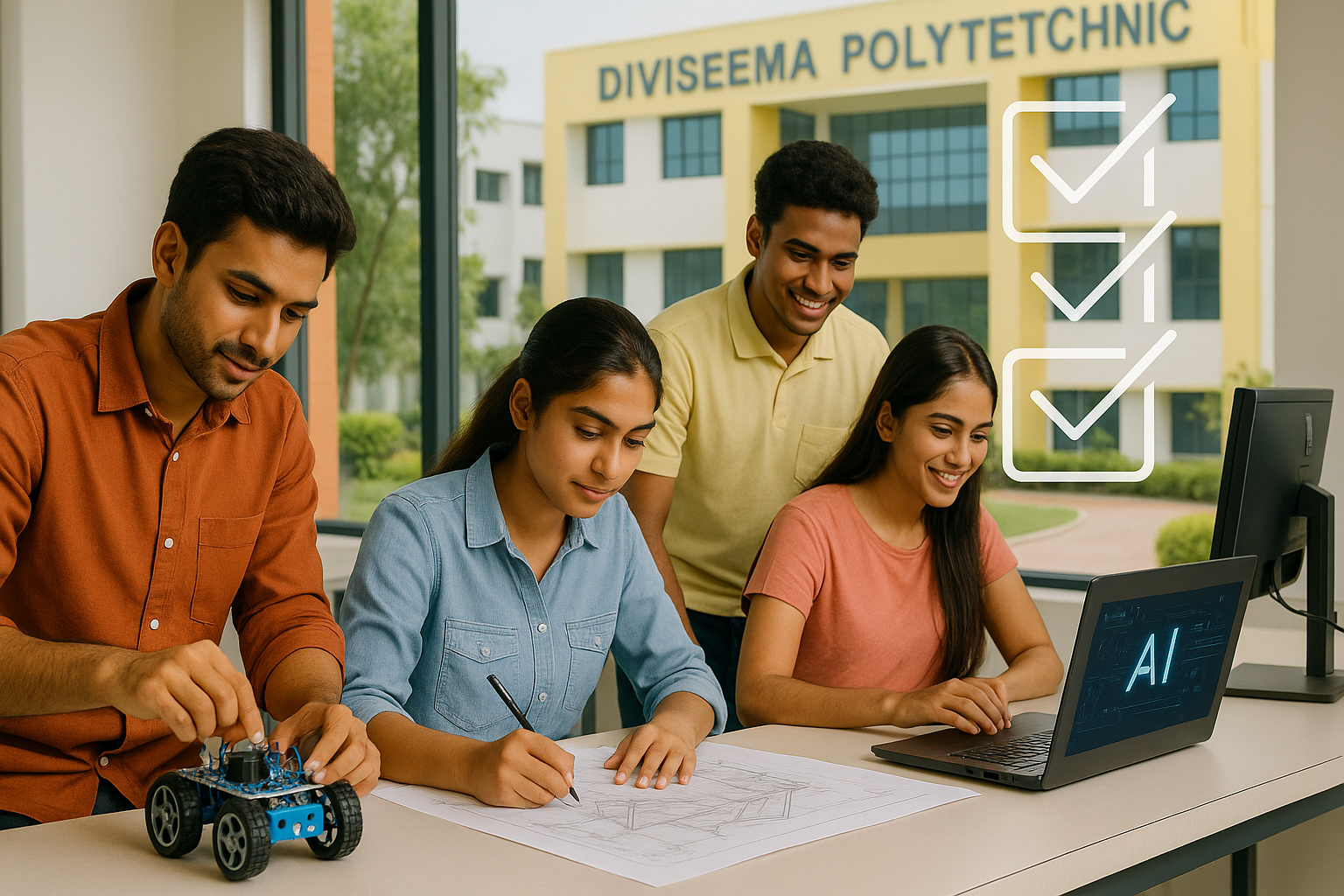A Legacy of Innovation
The Founding Vision: A Catalyst for National Progress
In the history of higher education, few institutions embody the spirit of national progress as profoundly as the Politecnico di Milano (PoliMi). Its establishment on November 29, 1863, was not merely an academic exercise but a strategic act of nation-building. Founded by the distinguished mathematician and politician Francesco Brioschi, the Istituto Tecnico Superiore (Higher Technical Institute) was conceived with a singular, powerful mission: to serve as the scientific and technological engine for a newly unified Italy. Drawing inspiration from the successful polytechnic models of Germany and Switzerland, Brioschi envisioned an institution that would bridge the gap between theoretical science and industrial application, directly fueling the country’s economic and infrastructural development.
This foundational ethos—a commitment to modernizing and elevating a nation—establishes a compelling parallel for contemporary India. As India pursues its global ambitions, its economic growth and competitiveness are inextricably linked to the quality and relevance of its technical education system. The journey of Politecnico di Milano, from a focused technical institute to a global powerhouse, offers a proven blueprint for how engineering education can be a primary catalyst for national development. The university’s history is one of deliberate evolution, marked by its 1927 move to the iconic Piazza Leonardo da Vinci, cementing its place in Milan’s new “City of Studies” (Città Studi). This trajectory underscores a commitment to long-term vision and continuous adaptation—principles of immense value to Indian institutions navigating their own transformation.
A Global Powerhouse in Engineering, Architecture, and Design
Today, more than 160 years after its founding, Politecnico di Milano stands as one of the world’s most outstanding technical universities. Its global reputation is quantified by its consistent and impressive performance in international rankings. In a landmark achievement, the 2026 QS World University Rankings saw PoliMi become the first Italian university ever to break into the global Top 100, securing the 98th position. This accomplishment is the culmination of a decade of strategic growth, during which the university climbed an astounding 89 positions.
This report will delve into the core pillars that underpin this success. We will explore the symbiotic relationship between teaching and research, where advanced scholarship is not isolated in ivory towers but is deeply integrated into the educational fabric. We will analyze the university’s deep and multifaceted integration with industry, which extends far beyond conventional placement services into collaborative research and co-development. Furthermore, we will examine the pervasive culture of innovation that permeates the campus and the sophisticated internationalization strategy that has transformed it into a truly global community.

Strategic Relevance for India: A Roadmap for Reimagining Technical Education
For the educators, policymakers, and administrators steering India’s technical education, Politecnico di Milano should be viewed not as a distant institution to be admired, but as a strategic case study offering a tangible and adaptable roadmap for reform. The Indian polytechnic system, while vast, faces systemic challenges: curricula often misaligned with industry needs, deficits in modern infrastructure, a nascent research culture, and weak industrial linkages that limit both student employability and institutional innovation.
The model of excellence crafted by Politecnico di Milano provides proven, systemic solutions to these very issues. This report argues that Indian institutions can learn from PoliMi’s journey to create a virtuous cycle of excellence. This involves a fundamental paradigm shift: moving from being primarily teaching-focused, diploma-granting bodies to becoming dynamic hubs of innovation, applied research, and entrepreneurial activity that drive regional and national economic development. PoliMi’s success is rooted in its foundational mission of being intrinsically linked to national progress. This purpose-driven identity has guided its strategic decisions for over a century, creating a powerful institutional culture that prioritizes applied research, graduate employability, and societal impact. For Indian polytechnics, adopting a clear and galvanizing purpose—such as “To drive local and national innovation in partnership with industry”—could be the crucial first step in their transformation, aligning their efforts with national imperatives like ‘Skill India’ and ‘Make in India’.
Pillars of Academic Excellence
The global prestige of Politecnico di Milano is built upon a foundation of rigorous academic programs, world-class faculty, and a curriculum that is both deeply rooted in fundamentals and dynamically responsive to the evolving demands of industry and society.
Disciplinary Strengths: Flagship Programs and Schools
PoliMi’s academic prowess is structured around four core schools: Architecture Urban Planning Construction Engineering; Design; Civil, Environmental and Land Management Engineering; and Industrial and Information Engineering. This structure facilitates both deep specialization and fertile interdisciplinary collaboration.
The university’s offerings span the full academic spectrum, from the three-year Laurea (Bachelor of Science) to the two-year Laurea Magistrale (Master of Science), and culminating in the Dottorato di Ricerca (PhD). Across all levels, the emphasis is on providing multidisciplinary training that is “in step with innovation and the world of work,” equipping graduates not just with technical knowledge but with the critical thinking and problem-solving skills required for leadership.
The university’s flagship programs exemplify this philosophy. The Master of Science in Architecture, for instance, offers specialized tracks like “Architecture and Urban Design” and “Architecture and Interior Space.” Interdisciplinary programs like the MSc in Design and Engineering and the new Master in Transformative Sustainability, offered jointly with the prestigious Bocconi University, showcase PoliMi’s ability to transcend traditional academic silos to address contemporary global challenges. A cornerstone of its international strategy is the offering of over 70 degree programs in English, a deliberate policy that has been instrumental in attracting a large and diverse global student body.
Quantifying Prestige: A Story Told by Rankings
The academic excellence of Politecnico di Milano is objectively validated by its stellar performance in the world’s most respected university rankings. This is not a static achievement but a reflection of a sustained upward trajectory, signaling a successful long-term strategy.
Its entry into the Top 100 of the QS World University Rankings (98th in 2026) is a historic first for any Italian university. This was the result of a remarkable climb of 89 positions over the preceding decade. In the Times Higher Education (THE) World University Rankings 2025, PoliMi is placed in the 201-250 band, showing consistent improvement.
While its overall rank is impressive, a deeper analysis reveals its dominance in core fields. The QS World University Rankings by Subject 2025 place PoliMi among the global elite: 6th for Art & Design, 7th for Architecture/Built Environment, and 21st for Engineering & Technology.
However, the most insightful data lies beneath the headline ranks. PoliMi’s ascent was decisively driven by exceptional scores in Employer Reputation and Academic Reputation. Its high Employer Reputation score reflects the immense esteem in which its graduates are held by international companies, confirming the university’s ability to produce highly qualified, work-ready professionals. Its strong Academic Reputation score signifies the profound respect it commands within the global academic community for its research and teaching quality.
This data reveals a crucial lesson: PoliMi’s high rankings are not the goal of its strategy, but the outcome of a deeply embedded institutional focus on the fundamentals of excellence—producing impactful research and highly employable graduates. The university’s leadership has explicitly stated that its ranking improvement is the result of a “clear growth strategy” involving careful planning and effective partnerships. For Indian institutions, which often pursue rankings through more superficial means, PoliMi’s model demonstrates that the only sustainable path to global recognition is through systemic investment in research quality and graduate preparedness.
The Engine of Excellence: Faculty and Curriculum
The engine driving this academic machine is its world-class faculty and a commitment to continuous curriculum innovation. Students from around the world explicitly cite the “esteemed faculty” and “cutting-edge research facilities” as primary reasons for choosing PoliMi. The university has strategically invested in attracting top global talent, which enriches the learning environment with diverse perspectives and best practices.
The curriculum itself is a living entity, constantly evolving to meet the needs of a changing world. The university’s agility is demonstrated by its proactive development of new, forward-looking programs. The creation of the Master in AI & Entrepreneurship, in partnership with the Albert School and with support from European AI leader Mistral AI, is a direct response to the urgent need for leaders who can build and scale tech ventures. This program masterfully blends advanced technical subjects with essential entrepreneurial skills, preparing students to become Europe’s next generation of innovators. This approach—identifying a critical need and rapidly developing a high-quality, interdisciplinary program to meet it—is a hallmark of PoliMi’s academic strategy and a powerful model for curriculum modernization.
The Research and Innovation Ecosystem
At Politecnico di Milano, research is not a secondary function but a “priority commitment” that is inextricably linked to teaching and innovation. The university has cultivated a formidable ecosystem that translates scientific inquiry into tangible technological advancements, economic value, and societal impact. This ecosystem is the “beating heart” of the institution, driving its academic reputation and its relevance to the industrial world.
From Theory to Impact: Research Structures and High-Impact Projects
The backbone of PoliMi’s research is its network of 12 departments, which function as powerful research hubs. This structure is complemented by a suite of large-scale, state-of-the-art interdepartmental laboratories that serve as catalysts for collaboration. These are not just teaching labs but major research infrastructures, including:
- PoliFAB: A cutting-edge micro and nanotechnology facility for prototyping innovative devices.
- The Wind Tunnel: A major facility for advanced aerodynamic research, used for everything from aerospace components to civil infrastructure analysis.
- The DriSMi Driving Simulator: One of the world’s most innovative dynamic driving simulators, used to validate advanced mobility concepts like autonomous vehicle algorithms.
- ArchMat Lab: A specialized laboratory for the chemical-physical characterization of materials used in both historical and innovative architecture.
This powerful infrastructure enables PoliMi to lead high-impact research in critical global fields like Artificial Intelligence, where it is a European pioneer; Sustainable Mobility, where it develops solutions for connected and automated vehicles; and Sustainability, where projects range from revolutionary wing designs for aviation to advanced materials for next-generation fuel cells.
Fueling the Research Engine: EU Funding and Industry Partnerships
A defining feature of a world-class research university is its ability to attract competitive funding, and in this arena, Politecnico di Milano is a dominant force. The university is the number one institution in Italy and fifth in Europe for projects funded under the EU’s highly competitive Horizon Europe framework. This consistent success is a powerful, objective indicator of the quality and innovative potential of its research.
Parallel to its success in public funding is its deep and strategic engagement with the private sector through the Joint Research Platform (JRP) model. JRPs are not short-term consulting contracts; they are medium- to long-term strategic partnerships between the university and a company, focused on shared research and innovation goals. These agreements often involve creating joint laboratories on campus and co-funding industrial PhD programs. The list of PoliMi’s JRP partners includes a who’s who of global industry, such as EssilorLuxottica, Siemens, Eni, Pirelli, Huawei, IBM, and Microsoft, demonstrating the immense trust that leading corporations place in PoliMi’s R&D capabilities.
Cultivating the Future: A Culture of Entrepreneurship
The translation of research into commercial ventures is systemized through a unique and highly effective support structure. At its heart is the Fondazione Politecnico di Milano, a foundation that acts as a crucial strategic intermediary, managing technology transfer and facilitating the university’s relationship with the business world.
The Fondazione manages PoliHub, the university’s Innovation Park & Startup Accelerator. Ranked among the top five university incubators globally, PoliHub’s mission is to support the growth of “deep tech” startups emerging directly from the university’s research labs. Since 2000, this ecosystem has nurtured 215 startups that have collectively raised over €547 million and created more than 1,500 jobs.
The existence of the Fondazione and PoliHub is a deliberate structural choice designed to overcome the friction between academic research and industry focus. By creating these professional intermediaries, PoliMi allows its academic departments to focus on research, while the Fondazione and PoliHub handle the complexities of business development, IP management, and startup acceleration. For Indian polytechnics, where industry engagement is often ad-hoc, this “strategic intermediary” model presents a powerful blueprint for systemizing and scaling up industry partnerships.
A Global Outlook: Strategy and Execution
Politecnico di Milano’s ascent is inseparable from its sophisticated internationalization strategy. This is not an ancillary activity but a core pillar of its identity, transforming its campus into a global crossroads for talent, ideas, and innovation.
Building a Global Community
The most visible manifestation of PoliMi’s global outlook is its diverse campus community. The university is home to 8,802 international students from over 100 countries, constituting nearly a quarter of the total student body. This presence is particularly pronounced at the postgraduate level, a testament to the success of the university’s strategic decision to offer almost its entire postgraduate portfolio in English. This policy has been the fundamental enabler of its ability to attract a large and talented pool of global students. The global character extends to its faculty, with active recruitment of leading academics from around the world enriching the academic discourse and strengthening international research networks.
Strategic Alliances for Global Leadership
PoliMi’s international strategy prioritizes depth over breadth, focusing on deep, strategic alliances with a select group of peer institutions. The centerpiece of this approach is its membership in the IDEA League, a prestigious alliance of five of Europe’s leading universities of science and technology: ETH Zurich, TU Delft, RWTH Aachen University, Chalmers University of Technology, and PoliMi itself. This is far more than a ceremonial network; it is a platform for concrete collaboration, including student summer schools, PhD research grants, and joint working groups on strategic issues like sustainability and research infrastructure. Beyond the IDEA League, PoliMi maintains significant partnerships with other world-leading institutions, including research collaborations with MIT and extensive double degree agreements with France’s École Polytechnique.
Structured Mobility: The Power of Dual Degrees
A key component of PoliMi’s internationalization is its portfolio of over 100 dual-degree agreements. These are not simple exchange semesters but highly integrated programs where students spend significant time at both institutions and earn two full degrees. An internal survey revealed that 73% of dual-degree graduates reported having more job offers as a direct result of their experience, demonstrating that structured, in-depth mobility provides a tangible competitive advantage in the global job market.
The PoliMi model shows that true internationalization is a “whole-of-institution” commitment. It requires foundational steps like offering high-quality programs in English, providing robust support systems for international students, and, crucially, moving beyond low-impact Memoranda of Understanding to build deep, structured partnerships that deliver tangible value to students and faculty.
The Campus as a Living Laboratory
The physical and digital environments of Politecnico di Milano are not passive backdrops but are actively designed as integrated systems that embody the university’s core principles of design, sustainability, and innovation. The campus itself is treated as a “living laboratory” for the concepts being taught and researched within its walls.
Infrastructure for the 21st Century
PoliMi’s main campuses in Milan are dynamic hubs that reflect its history and forward-looking vision. The historic Milano Leonardo campus, inaugurated in 1927, anchors the “City of Studies” and houses central administration and numerous engineering and architecture departments. The Milano Bovisa campus, established in a former industrial area, is a prime example of urban regeneration, co-locating the world-renowned School of Design with engineering departments and the PoliHub startup accelerator to foster synergy.
Integrating Sustainability and Design
Sustainability is not merely an academic subject at PoliMi; it is a core institutional value integrated into every facet of university life. This commitment is formalized in a comprehensive Strategic Sustainability Plan with clear, measurable targets. This plan translates into tangible initiatives, from reducing CO2 emissions and creating more green spaces to promoting public transport and implementing programs to reduce food and material waste. This “leading-by-example” approach turns the campus into a testbed for the sustainable solutions its own researchers are developing.
Digital Transformation of Campus Life
As a leading technological university, PoliMi applies its expertise to its own operations. The university provides a robust ICT ecosystem, including campus-wide Wi-Fi, free access to academic software, and a Virtual Desktop platform for remote access to high-performance applications. Central to this is the Polimi App, a mobile application that serves as a single portal for students to manage their entire academic journey—from class schedules and exam results to fee payments and real-time searches for available study spaces. This holistic approach to digital transformation uses technology as a powerful tool to improve efficiency, communication, and the overall quality of the student experience.
Takeaways for Indian Polytechnic Institutions: A Framework for Transformation
The success of Politecnico di Milano is the result of a deeply integrated, self-reinforcing system. By analyzing its core components and contrasting them with the current realities of the Indian polytechnic landscape, a clear and actionable framework for transformation emerges. The goal for India is not to replicate PoliMi, but to adapt the underlying principles of its success.
Cultivating a Research-Driven Culture
A fundamental distinction lies in the role of research. At PoliMi, research is a core, non-negotiable activity for faculty, directly linked to reputation, funding, and innovation. In contrast, the research culture in most Indian technical institutions is nascent. Faculty are often burdened with heavy teaching loads, with few incentives or resources for research.
Actionable Lessons for India:
- Shift Institutional Mandates: Redefine the role of polytechnic faculty to include research as a key responsibility, with workloads balanced to allow dedicated time for it.
- Build Grant-Seeking Capacity: Establish dedicated “Research Support Offices” to train faculty in writing competitive grant proposals.
- Incentivize Excellence: Link promotion and financial incentives directly to research output, including publications, patents, and secured grants.
Forging Robust Industry-Academia Linkages
PoliMi’s relationship with industry is a deep, strategic partnership focused on co-creation. The Indian polytechnic system’s industry connect is often superficial and transactional, limited to industrial visits and placements. This results in curricula misaligned with industry needs and graduates who lack job-ready skills.
Actionable Lessons for India:
- Adopt the Strategic Partnership Model: Move beyond generic MoUs to establish long-term, project-based partnerships with industry focused on solving real-world technical problems.
- Establish Professional Intermediaries: Support the creation of regional “Polytechnic Innovation Foundations,” modeled on Fondazione Politecnico, to professionally manage industry relations and technology transfer.
- Mandate Curriculum Co-creation: Ensure that curriculum design is done in active, formal collaboration with industry partners to align with the National Skills Qualification Framework (NSQF).
Strategies for Comprehensive Internationalization
PoliMi’s global standing is the result of a “whole-of-institution” strategy built on English-taught programs, robust student support, and deep, structured partnerships. In India, internationalization efforts are often fragmented and lack depth.
Actionable Lessons for India:
- Develop High-Quality Niche Programs: Identify areas of strength and develop high-quality, English-taught diploma programs designed to attract international students.
- Create a “Study in India Polytechnics” Support System: Establish well-resourced “Offices for International Affairs” to provide comprehensive, end-to-end support for foreign students.
- Prioritize Strategic Alliances: Encourage clusters of high-performing polytechnics to form deep partnerships with a select number of quality international technical institutions.
Modernizing Infrastructure and Curriculum
PoliMi’s infrastructure is world-class, with state-of-the-art labs and an agile, multidisciplinary curriculum. This stands in stark contrast to the Indian reality, where many polytechnics suffer from outdated infrastructure and rigid, theoretical curricula.
Actionable Lessons for India:
- Strategic Infrastructure Investment: Target funding to create modern, specialized “Centers of Excellence” and laboratories that are directly relevant to local industry needs.
- Empower with Curricular Autonomy: Grant high-performing polytechnics greater autonomy to design and update their curricula in direct consultation with industry.
- Embrace the “Campus as a Living Lab”: Encourage institutions to integrate sustainability and digital transformation into their own campus operations, providing a hands-on learning environment for students.
The following table synthesizes these lessons into a direct, actionable framework.
Conclusion: An Ambitious Vision for Indian Technical Education
Politecnico di Milano offers a compelling narrative of how a technical institution, founded with a clear national purpose, can evolve into a global benchmark for excellence. Its success is the result of a sustained, strategic commitment to a virtuous cycle where world-class research fuels educational innovation, produces highly sought-after graduates, attracts deep industry partnerships, and solidifies a formidable international reputation. This integrated system provides a rich source of inspiration for the transformation of technical education in India.
The goal for India is not blind duplication but intelligent adaptation. The challenges facing Indian polytechnics are significant, but the principles demonstrated by PoliMi—of purpose-driven leadership, of professionalizing the industry interface, of prioritizing quality in international partnerships, and of treating the campus as a living laboratory—are universally applicable.
The time has come for a fundamental reimagining of the role of polytechnic education in India. The final and most crucial lesson from Politecnico di Milano is one of ambition. It is a call to action for India’s policymakers, administrators, and educators to move beyond the traditional perception of polytechnics as second-tier institutions. It is a call to embrace a new paradigm where these institutions are empowered to become what they are truly capable of being: dynamic, agile, and innovative engines of regional economic growth, social development, and technological advancement. By cultivating a culture of excellence, fostering deep connections with industry, and opening their doors to the world, Indian polytechnics can, like their counterpart in Milan, become indispensable catalysts in the nation’s journey towards a prosperous and self-reliant future.





